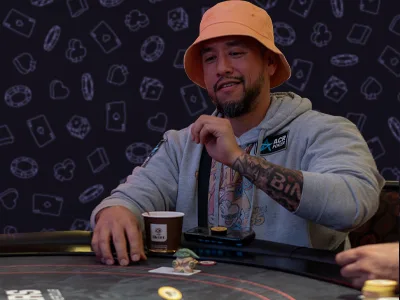Watch who’s opening light, who’s flatting too wide, and who folds to pressure Running into a cold deck in a Texas Hold’em tournament can be one of the most frustrating experiences for any player. A cold deck means you’re getting consistently poor hands and not hitting flops, which can test both patience and strategy. However,
Tag: Texas Holdem
Mucking as a Strategic Move in Texas Hold’em: How and When To Implement
Use mucking as a calculated move and it can quietly become part of a winning strategy In Texas Hold’em, mucking is often seen as a routine act—folding a hand you don’t want to show. But in certain moments, it can become a subtle but effective part of a larger strategy. Knowing when and how to
Endgame Heads-up Strategies: When To Push and When To Fold
Mastering the timing of aggression and caution in heads-up play separates good players from champions In tournament poker, reaching heads-up play marks the final and most intense stage. With just two players remaining, every decision can significantly alter the outcome. Understanding when to push and when to fold in the endgame is key to sealing
Understanding Texas Hold’em Cold Decks: What They Are and How They Affect Your Game
If you can take cold decks in stride, you’ll be better equipped to handle the swings of the game In Texas Hold’em, players sometimes refer to a “cold deck” when discussing hands that seem unusually unfair or tough to escape. While the term might sound like it involves cheating, in everyday poker conversation, it usually
Mucking After the Flop in Texas Hold’em: Key Indicators for Folding
Post-flop folding isn’t a weakness; it’s a disciplined move that allows you to preserve your stack and wait for better spots Knowing when to fold after the flop in Texas Hold’em can save players from bleeding chips unnecessarily. While it’s tempting to stay in a hand with hope for a miracle turn or river, experienced
The Art of the Check-Raise in Texas Hold’em Heads-up Play
The check-raise in heads-up play isn’t just a flashy trick—it’s a tool for disrupting rhythm and gaining control In Texas Hold’em heads-up play, mastering the check-raise can turn a balanced match into a one-sided affair. While it’s a move that comes with risk, using it well forces opponents to think twice about every bet they
Starting Hand Selection: What To Play in Early Stages of Texas Hold’em Tourneys
Surviving the early game with a solid stack and minimal risk is often the best setup for later success In the early stages of a Texas Hold’em tournament, smart starting hand selection can set the tone for your entire run. With deep stacks and relatively low blinds, there’s no need to take unnecessary risks. Instead,
Identifying Myths about Small Pocket Pairs in Poker
Blindly following the idea that small pocket pairs are always profitable can lead to mistakes Small pocket pairs often create a lot of debate among poker players. While they can be powerful in the right situations, many common beliefs about these hands don’t hold up under scrutiny. Understanding the truth about small pairs like 2-2
When Is It Too Late to Muck? Common Mistakes To Avoid in Texas Hold’em
Never assume your hand is dead just because you think you’re beat In Texas Hold’em, knowing when it’s acceptable to muck your hand—meaning to fold or toss your cards into the discard pile without showing—is crucial. While mucking might seem straightforward, doing it at the wrong time can lead to confusion, disputes, or even disqualification
Understanding the Differences Between Short Deck and Texas Hold’em
Mastering both involves recognizing where traditional strategy doesn’t apply and adjusting your tactics accordingly Short Deck and Texas Hold’em are both forms of poker that share many rules and concepts, but key differences between the two significantly impact strategy and gameplay. Understanding how these games diverge is essential for players transitioning between formats. Short Deck,
How Small Pocket Pairs Fit Into a Larger Texas Hold’em Strategy
Used judiciously, small pocket pairs can produce huge profits without taking much risk Small pocket pairs—deuces through sixes—are not necessarily fearsome on the surface, but they can be an excellent part of a good Texas Hold’em strategy if used properly. These are not about brute force; they’re about timing, finesse, and long-term value. The greatest
The Role of Position in Deciding Whether to Muck in Texas Hold’em
In poker, folding at the right time is just as critical as knowing when to push In Texas Hold’em, understanding when to muck your hand is one of the foundational skills that separates experienced players from beginners—and position plays a major role in making that decision. The concept of position refers to where you














